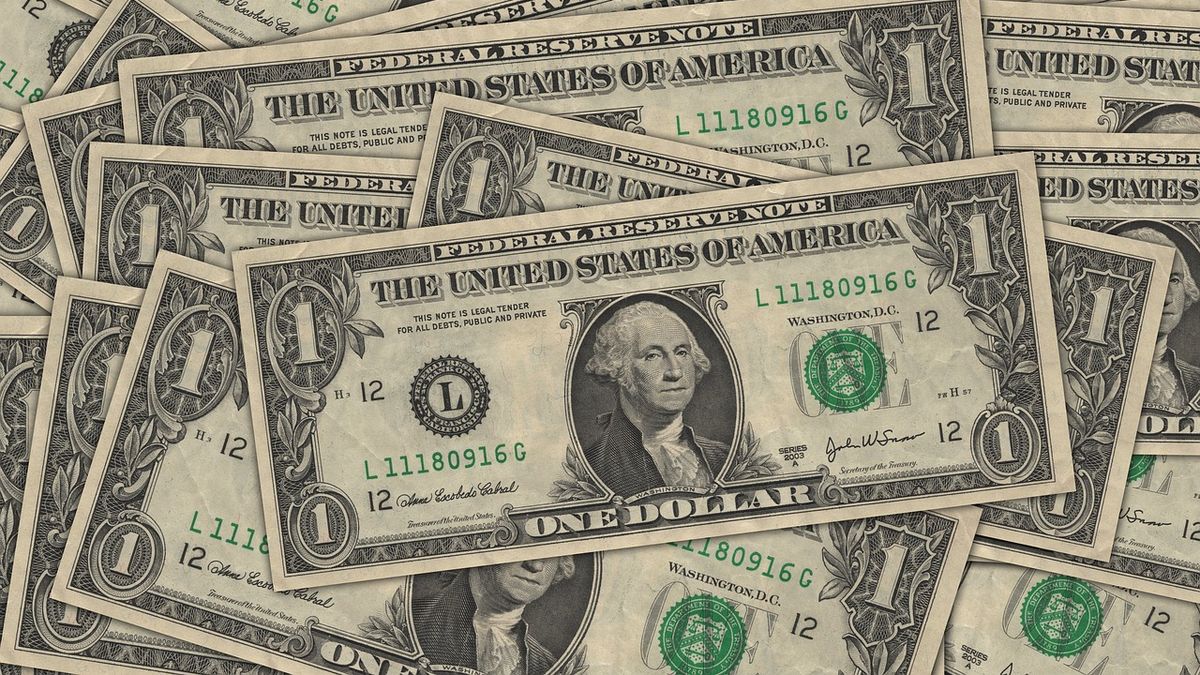He dollar The market opened stably this Monday after the announcement of the United States Federal Reserve (Fed) ratification of the central bank’s baseline for interest rate cuts after the inflation data was released this Friday; meanwhile, in Uruguay The US currency closed March with a depreciation of 3.83%.
The index of dollar, which measures the US currency against six rivals, including the yen, was steady at 104.50, near the six-week high of 104.73 hit last week.
US stock futures are pointing higher after the holiday on Friday, in which the Federal Reserve released data showing that its preferred measure of inflation indicated that price pressures were continuing to ease, reinforcing bets for a rate cut. interest in June.
For its part, the cryptocurrency bitcoin rose 1.75%, to $70,870. Regarding raw materials, crude oil Brent It rose 29 cents, or 0.3%, to $87.29 a barrel, after rising 2.4% last week. US crude oil West Texas Intermediate It stands at $83.48 a barrel, 31 cents, or 0.4%, after rising 3.2% last week.
Crude oil remained on the rise amid a favorable outlook for supply and demand, with the improvement of the Chinese economy and expectations of production cuts in the OPEC+.
Many markets remain closed on Monday for the Easter holidays, including Australia and Hong Kong in Asia, and the United Kingdom and Germany. Yeap Jun Rong, market analyst at IG, said the “moderation” in US inflation “could serve to prompt the Federal Reserve to begin its rate cut process sooner rather than later.” “With Wall Street within reach of a new record, risk appetite could remain.”
Eye on Asia
Chinese stock markets led the rise in most of Asia this Monday, in an optimistic economic context about the global economy, but Japanese stocks fell with the and in stuck near levels that have traders on guard against monetary intervention.
Chinese companies rose 1.63% as of early morning, leading regional markets higher after a private survey showed the country’s manufacturing activity showed the biggest growth in 13 months in March, reinforcing official data from the end of the week, which showed the first expansion in six months in March.
He MSCI index Broader Asia-Pacific stocks, which do not include Japan, rose 0.06%. However the Nikkei Japan fell 1.5% in the midday break, weighed down by fears that the yen buying intervention will harm the profit prospects of exporters and the profitability of foreign investors.
There was also selling as it was the first day of the country’s new fiscal year, with the benchmark index still near the all-time high reached just over a week ago, according to analysts. US S&P 500 index futures rose 0.33% and technology index futures Nasdaq they earned 0.54%.
On the other hand, China’s positive PMIs “may pave the way for bearish sentiment to dissipate in the near term,” he added. Regarding currencies, the dollar fell 0.07%, to 151.27 yen, but remained in the center of its narrow trading area of the last week and a half. Official warnings of intervention have intensified since the yen weakened last week to 151.975 per dollar, its lowest level in 34 years, and Japanese Finance Minister Shunichi Suzuki repeated on Monday that he will not rule out any options against moves. excessive.
What happens with the dollar in Uruguay?
On the last business day of March, the dollar in Uruguay rose 0.12% and was sold at 37.55 pesos, according to the interbank of the Central Bank of Uruguay (BCU).
In March, the US currency lost 1.50 pesos of its value, that is, 3.83%, contrary to what happened globally where it was strengthened thanks to the monetary policy of the United States Federal Reserve (Fed) that has been postponing the start of the rate cut.
In the exchange market of Uruguayhe dollar accumulated a loss of 3.77% during the year, once again triggering the debate about the exchange rate delay and the loss of competitiveness. The Rural Federation On Wednesday, he asked for an exchange rate of 58 pesos.
Source: Ambito




